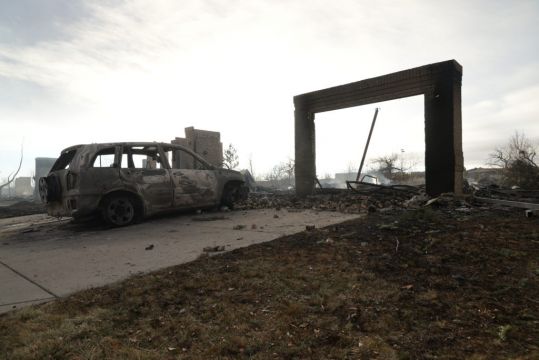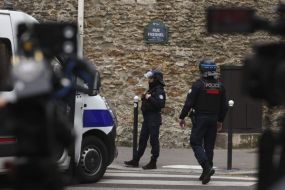At least 500 homes are thought to have been destroyed by wind-fuelled wildfires outside Denver, officials said, but there are no known deaths.
Tens of thousands of Colorado residents driven out by the fires are discovering what is left standing of their lives after the flames burned hundreds of homes, a hotel and a shopping centre.
Boulder County Sheriff Joe Pelle described one of the communities lost to the fire as “just smoking holes in the ground”, but said there had been no reports of missing people.
“It’s unbelievable when you look at the devastation that we don’t have a list of 100 missing persons,” he added.

At least one first responder and six other people were injured in the blazes that erupted outside Denver on Thursday morning, unusually late in the year, following an extremely dry autumn and amid a winter nearly devoid of snow.
Mr Pelle, who gave the early damage estimate, said there could be more injuries because of the intensity of the fires, propelled by winds that gusted up to 105mph.
“This is the kind of fire we can’t fight head-on,” Mr Pelle said. “We actually had deputy sheriffs and firefighters in areas that had to pull out because they just got overrun.”
By first light on Friday, the towering flames that had lit up the night sky were gone, leaving smouldering homes and charred trees and fields.
The winds had died down, and light snow was in the forecast, raising hopes it could prevent flare-ups.

The neighbouring towns of Louisville and Superior, about 20 miles north west of Denver and home to a combined 34,000 people, were evacuated ahead of the fires, which cast a smoky, orange haze over the landscape.
The two towns are filled with middle and upper-middle-class subdivisions with shopping centres, parks and schools.
Residents evacuated fairly calmly and in orderly fashion, but the winding streets quickly became clogged. It sometimes took cars as long as 45 minutes to advance half a mile.
Small fires cropped up here and there in surprising places — on the grass in a central reservation or in a dumpster in the middle of a car park — as gusts caused the flames to jump.
Shifting winds caused the skies to turn from clear to smoky and then back again as sirens wailed.
The first fire erupted just before 10.30am and was “attacked pretty quickly and laid down later in the day” with no structures lost, Mr Pelle said.

A second blaze, reported just after 11am, ballooned and spread rapidly, he added, covering at least 2.5 square miles.
Some of the blazes in the area were sparked by downed power lines, authorities said.
Scientists say climate change is making weather more extreme and wildfires more frequent and destructive.
Colorado’s Front Range, where most of the state’s population lives, had an extremely dry and mild autumn, and winter has been mostly dry so far.
Denver set a record for consecutive days without snow before it had a small storm on December 10, its last snowfall before the wildfires broke out.
About 90% of Boulder County is in severe or extreme drought, and it has not seen substantial rainfall since mid-summer.
“With any snow on the ground, this absolutely would not have happened in the way that it did,” said snow hydrologist Keith Musselman.







